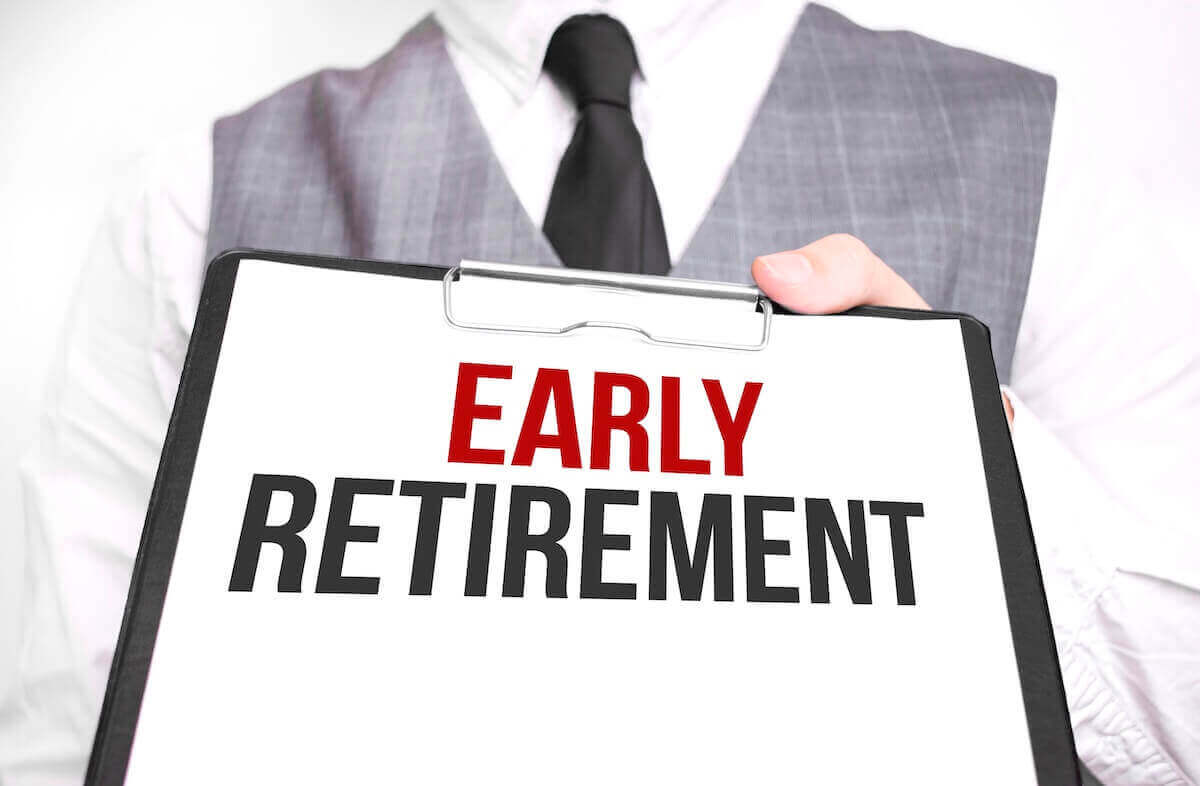If you elect to retire under VERA, one of your biggest concerns might not be “Am I too young?” but rather, “What will my pension be worth in 20 years?” You see, if you’re 55 and you retire, your pension will not increase until 62. It will be static and stay the same until age 62. Meanwhile, the purchasing power of your money will slowly fizzle away, like that slow, leaky tire you can never locate the leak on. You struggle and try, and fill it up with air every several weeks. The tire looks fine, with plenty of tread, but the performance diminishes consistently over time.
How Real Is Inflation?
When the Fed speaks of low or no inflation, we who have growing children in our homes know this is not so. When my wife and I feed a family of 5, and 3 good eaters, and I pass through the checkout line at Trader Joe’s, no one can tell me prices have gone up by 3%. My grocery bills are much sharper, higher, than just a few years ago for a certainty! When I swipe that credit card, it rings out loudly. I am so often amazed how quickly I can break the $100 barrier at the grocery store when I’ve gone in for just a few items. Aren’t you? And with the rising costs of healthcare being well into the double digits for FEHB, inflation is a little beast.
Real Talk from the Grocery Aisle
“I pass through the checkout line at Trader Joe’s and break $100 when I came in for five things. That’s inflation. It’s real, and it’s not slowing down.”
Inflation is there, it’s strong, and it’s an enemy. It’s slow yet deliberate, and it eats away at our money. Its presence must be addressed and dealt with, especially if large amounts of a person’s savings are in the bank earning far less than it needs to be.
We are reminded that even when we do earn what appears to be a decent interest rate, taxes to the tune of, say, 25% could easily chop that same amount from our true rate of return. So a 4% interest rate would be a net 3%, and a 3% interest would be a net 2.25%, as an example of a gross 25% fed and state rate combined. Many of you are paying 31% or more once federal and state taxes are combined.
Inflation is insulting to our money and dangerous to our savings. We recognize that everyone needs to have some emergency money at the bank or in savings, say 6 months’ gross wages or retirement income. But to have large amounts of our TSP (or 401ks/IRAs for that matter) sitting in cash can be potentially dangerous to our retirement.
Large savings or money market accounts may just not be serving us well either. No one ever got rich with savings accounts. And bond funds can fluctuate, and do, with interest rates. When interest rates increase, bond funds generally go down, sometimes precipitously.
For many, the conversation can be uncomfortable. The bank never seems to lose their money, and they always know how much money they have in the G Fund. This for some feels like safety. But that silent nemesis of our retirement savings, inflation, is shrinking our money. A person should not be penalized for saving their money at the bank or inside the TSP’s G Fund.
Even the TSP recognizes this problem of inflation. The G Fund’s stated objective is to outpace inflation without exposing the fund to the risk of loss. Yet the Lifecycle Funds’ most conservative fund, the L Income Fund, still has nearly 27% of the balance in stocks. This was only 20% just a decade ago.
Why the changes at the TSP Board to increase your exposure to stocks? After all, by selecting the L Income Fund, the statement is made that you are terribly conservative, needing the money right now for income. Yet the Thrift Board still recognizes you must have some stock exposure, otherwise your money will shrink. There must be some method of growth, because inflation is real.
G Fund vs. Growth Options
Many federal employees gravitate toward the G Fund because it feels safe — and it does offer principal protection. But that safety comes at a cost. The G Fund and other conservative investments may not always outpace inflation. Here’s a simplified comparison:
| Option | Pro | Con |
| G Fund | Principal is protected | May not keep up with inflation over time |
| C/S Funds | Higher potential growth | More market volatility |
| L Income Fund | Diversified with modest growth | Includes some exposure to stocks |
Your money in the bank, or some could make the argument your G Fund at the TSP, is like a grown child. They’re 18, sitting on the couch not contributing to the household chores, watching TV while their laundry needs to be done and their dirty dishes pile up in the sink. “Get up! Get to work!” Put your money to work, get it going.
Age 62 Relief Comes?
The same is true with your pension; its purchasing power will diminish over time. Finally, relief comes at age 62 or older. Your FERS pension will begin to increase with a COLA formula. It should be no surprise that the newer FERS retirement system trails the former CSRS more lucrative retirement system in its annual COLAs.
For those who retire after age 62, they will receive the typical COLAs which average roughly 2% annually for a FERS retiree. These more modest COLAs compared to the old CSRS retirees is the nature of the beast, as times change and retirement pensions nationwide are being shrunk or eliminated altogether.
For a Federal Employee who retires at age 62 or older, inflation has always been an enemy. Your pension will not pace inflation, averaging about 2% annually, and you need something to combat this.
If you have substantial TSP or IRA savings, perhaps even a stock trading account, an appropriate portion of these funds can be allocated to grow with the stock market. Then, as your pension money shrinks and loses purchasing power, a portion of your stock money can be transitioned away from potential stock losses to a more secure, stable position meant for monthly or discretionary income.
To be clear, intermingling stock growth funds, such as the C Fund at TSP, with the G Fund can create problems for retirement income planning.
Returning to the “Younger” Retiree
Remember these issues of inflation were for retirees that retire with a COLA inside their pension at age 62 or older. What of those retiring with no COLA for some years, say age 55 or 57? The farther away from Age 62, the more critical it is to apply these principles mentioned above, having exposure to stocks for growth and using them eventually for possible future income.
How Inflation Erodes a Flat Pension Over Time
| Year | Inflation-Adjusted Value (2.5% yearly inflation) |
| Year 0 | $2,500 (original value) |
| Year 5 | $2,200 |
| Year 10 | $1,935 |
| Year 15 | $1,705 |
Inflation can be likened to smoking. Sure it might be okay for a while, and a few years later no seeming side effects. But 8-10 years later, cigarettes could kill you. The same is true with inflation. It can and will sneak up on you if you’re not aware of it and combating it, and can dwindle your money away slowly, but dwindle, nonetheless.




